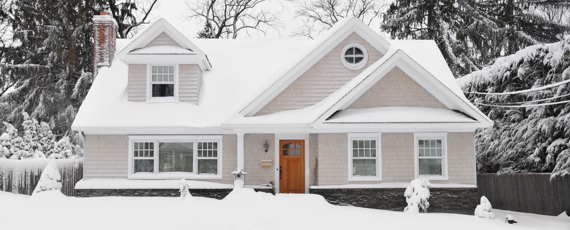Preparing Your Home For Winter

The gusting winds, heavy snow, and freezing temperatures associated with winter are normal and typically anticipated characteristics of Canadian winters. However, winter weather events mixed with a lack of preparation can lead to building damage, freeze-up, and flood. Advance preparation can help to mitigate this year’s winter weather impacts on your home.
The checklist that follows, though not all-inclusive, can be an effective part of your home’s winter weather plan. The issues highlighted herein should be addressed by homeowners to help prepare for the potential impact of winter weather.
Building and Structure
The importance of building maintenance should not be overlooked when preparing for winter. Look for any evidence of past damage to your building’s structure. Pay special attention to damaged roofs that may need replacement, and take note of any areas of potential instability during winter weather.
- Review building additions or anything new on the roof that may increase snow drifting. Excessive snowdrifts that increase the weight applied to roof structures can be caused by air conditioners, fan housings, and antennas, and lead to roof collapse. Areas where snowdrifts are likely to occur include:
- Intersections of low and high roofs.
- Valleys between two peaked roofs.
- Intersections of roof and roof-mounted equipment.
- Maintain roofs in good condition, including repairing leaks and securing flashings.
- Check that anything mounted to the roof is secured against damage during heavy winds.
- All building openings should be weather-tight so they will not permit cold air to enter that could in turn cause water pipes to freeze.
- Check that eavestroughs and downspouts are secured to buildings, clear of leaves and debris, and drain away from the building.
- Ensure trees that could fall when laden with wet snow or ice are not overhanging the building.
- Check that any street drains near to your home are clear of debris, snow, and ice.
- Ensure sump pumps are operational and equipped with monitored alarms with battery back-up.
- Know the location of all water shut-off valves in case of a burst pipe.
Heating Equipment
Boilers, furnaces, and other heating equipment should be inspected and maintained in accordance with manufacturers’ guidelines. Winter storms may result in power failure, which may deactivate your heating system. If this occurs, water-filled piping may freeze and rupture. As part of your checklist:
- Ensure scheduled service is completed for all equipment such as boilers, furnaces, and heating, ventilation, and air conditioning (HVAC) including prewinter servicing.
- Bleed radiators.
- Store combustibles safely away from heating equipment.
- Turn-off and drain water supplies during extended power failures when building interior temperature could drop below freezing. When pipes cannot be drained, such as radiator pipes, temporary heating maybe required.
Snow Removal
Keeping active walkways, stairways, and driveways clear of snow and ice will help reduce the likelihood of slips and falls. It’s also recommended to:
- Maintain adequate supplies of shovels, sand, and salt on-site.
- Ensure any other snow removal equipment is in good working order.
- Consider utilizing a snow removal contractor for snow removal or to assist during major snow events.
- Ensure access is maintained to fire hydrants.
- Monitor snow levels on roofs.
- Address and/or relocate downspouts that may create icy conditions on pathways.
